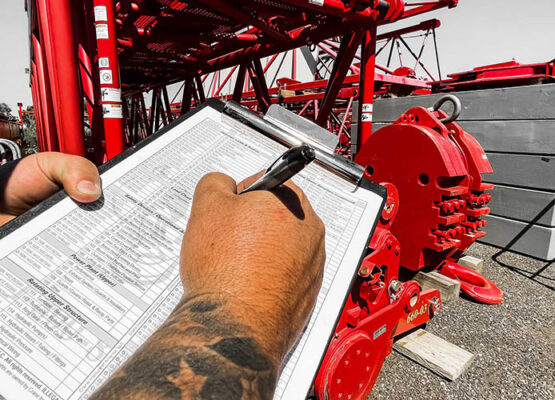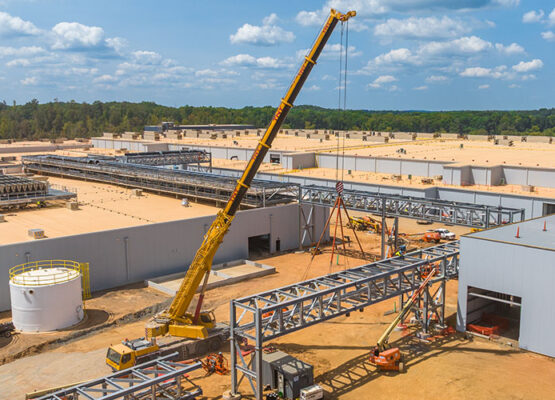Maintaining and Inspecting Crawler Cranes

- January 30, 2025
Best Practices for Maintaining and Inspecting Crawler Cranes
Crawler Cranes are essential machines in heavy lifting and construction, offering stability and mobility on rough terrains; however, to ensure safety and to maximize the lifespan of these machines, regular maintenance and inspection are crucial. At Southway Crane & Rigging, we emphasize the importance of a robust maintenance schedule for Crawler Cranes to ensure their longevity and operational efficiency. That is why we have put together some information outlining the best practices for maintaining and inspecting Crawler Cranes.
Learn how to choose the right crane for your project
1. Routine Inspections and Pre-Operation Checks
Before operating a Crawler Crane, a thorough inspection is essential to catch potential issues early. Operators should check hydraulic systems, the condition of the racks, and the functionality of safety devices like load moment indicators. By performing these checks, you can ensure that the crane operates smoothly, avoiding unexpected failures during operation.
2. Regular Lubrication and Fluid Management
Proper lubrication of moving parts is critical for maintaining the crane’s efficiency and longevity. Regularly lubricating components such as the boom, mast, and winches can help reduce friction and prevent wear. Additionally, checking fluid levels—hydraulic fluid, engine oil, and coolant—is important to avoid overheating or damage to vital systems, ensuring the crane runs smoothly.
3. Cleaning and Debris Removal
Cleaning the Crawler Crane after use is vital for preventing dirt, debris, and mud from accumulating on key components. These particles can obstruct moving parts, leading to performance issues. Keeping the crane clean not only helps with maintenance but also allows for more effective inspections by revealing any wear or damage that might otherwise be hidden.
4. Scheduled Maintenance and Component Replacements
Adhering to a regular maintenance schedule is crucial for avoiding unexpected breakdowns. Replacing filters, changing oils, and inspecting critical components such as the winch drum and brake linings should be done as per the manufacturer’s recommendations. Regular maintenance helps keep the crane in peak condition, reducing the need for costly repairs and preventing long periods of downtime.
5. Operator Training and Safety Practices
Proper training ensures that operators know how to safely operate the crane and recognize potential issues. Adhering to safety procedures like load testing, understanding load limits, and using proper rigging techniques can prevent accidents and help preserve the crane’s functionality over time.
For additional information regarding the best practices for maintaining and inspecting Crawler Cranes, do not hesitate to contact the professionals at Southway Crane & Rigging by filling out our online contact form.
Related Blogs

- October 21, 2025
Best Practices for Regular Crane Maintenance
How to Properly Maintain a Crane Regular crane maintenance is critical to ensuring safety, performance, and.

- September 9, 2025
Considerations for Using Cranes on Jobsites.
Things to Keep in Mind When Operating Cranes in Tight Areas Working with cranes in confined.

